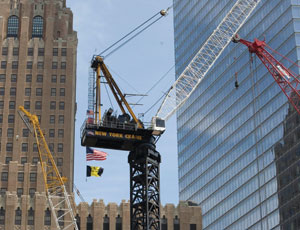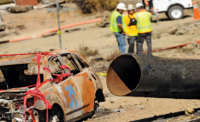The construction industry is gearing up to carry out one of the most important federal safety actions in years: the Occupational Safety and Health Administration’s overhaul of its 39-year-old standard governing cranes and derricks.

OSHA, which is part of the Dept. of Labor, says its final crane-safety regulation, released July 28 and to be published in the Federal Register on Aug. 9, will affect about 267,000 certification organizations and construction and crane-rental companies that altogether employ 4.8 million workers.
The first key date is Nov. 8, when most of the regulation’s provisions take effect. One significant exception to that deadline is the new requirement that all construction-crane operators are to be certified for the equipment they run. That provision goes into effect in 2014.
There is much to digest in the revised “Cranes and Derricks in Construction” standard. The 1,070-page document replaces a 1971 regulation and is “long overdue,” says Labor Secretary Hilda Solis, whose agency started work on the rule back in 2003.
The wide-ranging update includes provisions dealing with products that emerged over the past four decades. It also focuses on sectors, such as crane operations near power lines, where the largest number of construction-crane deaths has occurred. Construction industry and union officials welcomed the new rule, but say that follow-up OSHA guidance will be needed to address questions about certain provisions.
Industry Reactions
David Michaels, assistant secretary of labor in charge of OSHA, says, “We think this will make an important contribution in saving lives,” for workers and for passers-by near construction sites. OSHA estimates that there are 89 crane-related fatalities in construction annually and that the new regulation will prevent 22 deaths and 175 non-fatal injuries per year. Construction crane safety was thrust into the spotlight in 2008 after fatal accidents in New York and other cities.
Chris Williams, Associated Builders and Contractors’ director of safety, says he can sum up his reaction to the new regulation “in one word—and that’s ‘finally.’” He adds: “We think that it’s workable and it’s a good rule for everyone involved.”

MICHAELS
Vincent J. Giblin, general president of the International Union of Operating Engineers, says, “Considering the technological advancements (in regards to cranes and derricks) that have transpired since...1971, what’s not to like about a new rule that modernizes the construction industry’s use of this equipment?” Giblin adds, “Collectively, the provisions in the standard will enhance safety, prevent injuries and save lives.”
Key Provisions
The mandatory crane operator certification may be the provision that will have the largest impact on the industry. ABC’s Williams says that there are more than 200,000 construction crane operators in the industry, and OSHA should be commended for allowing four years to meet the certification requirement. He says that it will take “quite some time” for certifying organizations to gain enough capacity to cover so many operators.
Under the rule, employers will be responsible for the cost of their workers’ certifications. The certifying tests can be given “in any language the operator candidate understands,” the regulation states.
Williams notes that in a change from the October 2008 proposed rule, the final version allows operators who are certified while in the military to carry that credential to a private-sector job...



Post a comment to this article
Report Abusive Comment